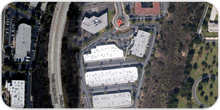Spinal Cord Measurement System: spineSQUID™
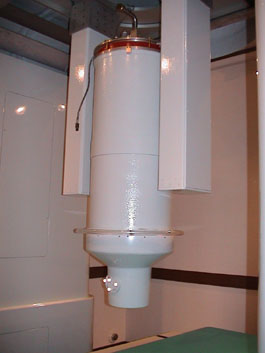
5-axis Full motion dewar gantry
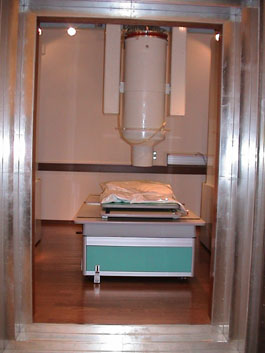
3-axis bed
Tristan has built and delivered a fully integrated 63 channel magnetic source imaging system for non-invasive measurements of spinal cord activity and source localization. The system is adaptable for humans or animals. Because spinal signals are action potentials, the system is designed to acquire data in excess of 100,000 samples per second on each of its 80 channels (including reference channels), more than an order of magnitude faster than conventional MEG devices. For this project, Tristan devised a novel high speed data acquisition and monitoring system capable of acquiring and storing more than 10 minutes of continuous spine data, and simultaneously retrieving and reviewing a data set collected previously.
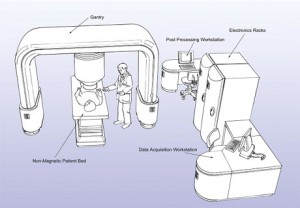 The system consists of a sensor containing a large array of superconducting magnetic signal detectors and reference channels for noise reduction; signal acquisition, processing and display workstations; a sensor positioning gantry; a patient bed; patient/sensor position indicator.
The system consists of a sensor containing a large array of superconducting magnetic signal detectors and reference channels for noise reduction; signal acquisition, processing and display workstations; a sensor positioning gantry; a patient bed; patient/sensor position indicator.
The spineSQUID™ system draws on the following capacities of Tristan …
- Tailor-made complex shape dewars
- Sophisticated cryogenic dewar construction
- Noise reduction software and hardware
- Orthogonally oriented vector gradiometer (dBx/dz, dBy/dz, dBz/dz) detection coils
- Multi-axis dewar gantries
- Magnetically quiet motorized patient beds
- Vector and tensor reference arrays for noise cancellation
- Software for data analysis in LabVIEW™ including FFT, digital filtering and real-time review
- Software compatibility with standard source analysis packages (BESA, EMSE) and with MATLAB.
- Integrated hardware and software for positioning and tracking the subject: including 3D optical positioning camera system
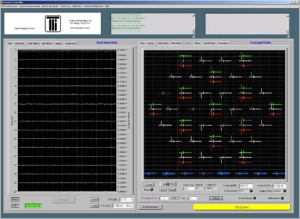
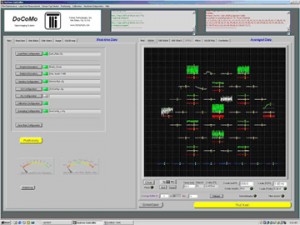 Many of Tristan’s systems have been the result of collaborative efforts between us and our customers. We can vary channel density (spatial frequency), coil diameter (sensitivity and spatial resolution) and sensor spacing (sensitivity and spatial resolution) to the requirements of the physiological signals being measured. Please contact Tristan to discuss your particular requirements.
Many of Tristan’s systems have been the result of collaborative efforts between us and our customers. We can vary channel density (spatial frequency), coil diameter (sensitivity and spatial resolution) and sensor spacing (sensitivity and spatial resolution) to the requirements of the physiological signals being measured. Please contact Tristan to discuss your particular requirements.

